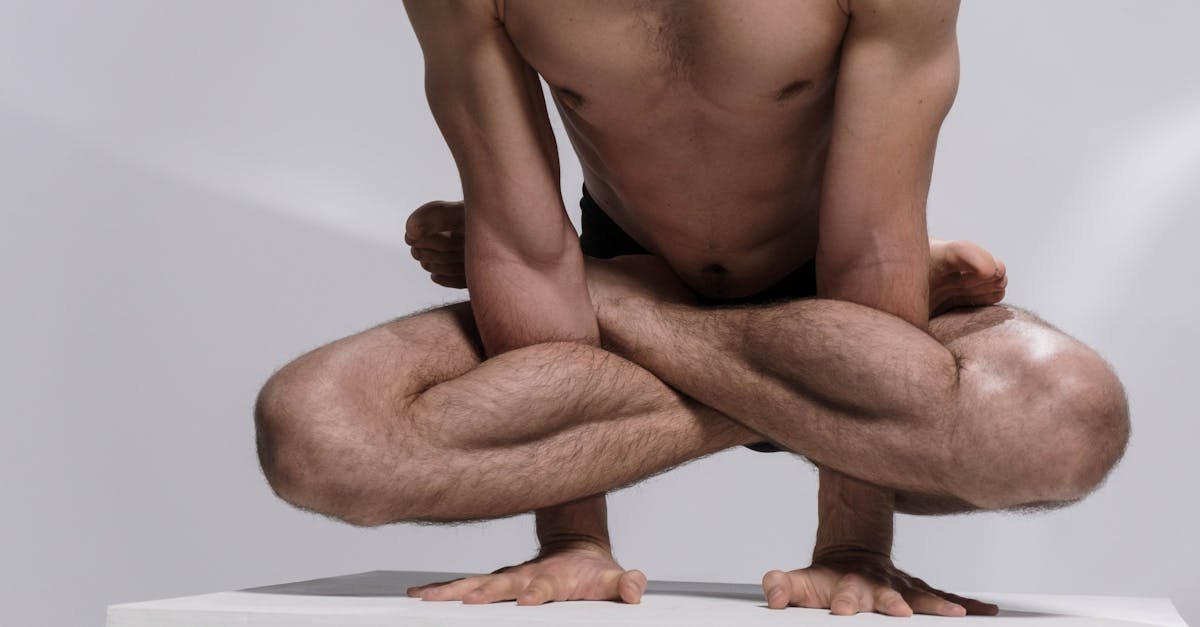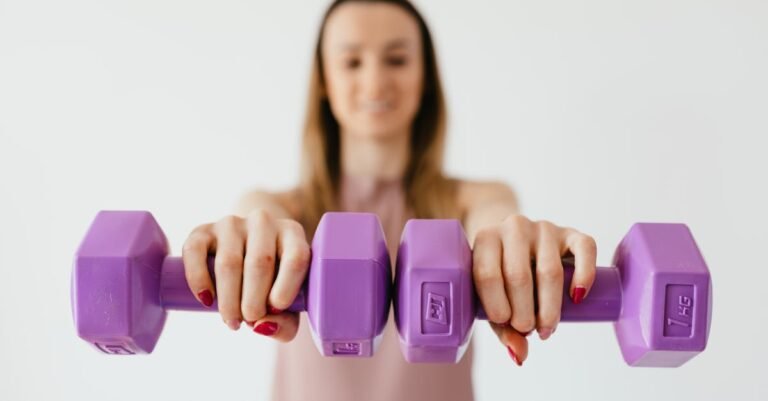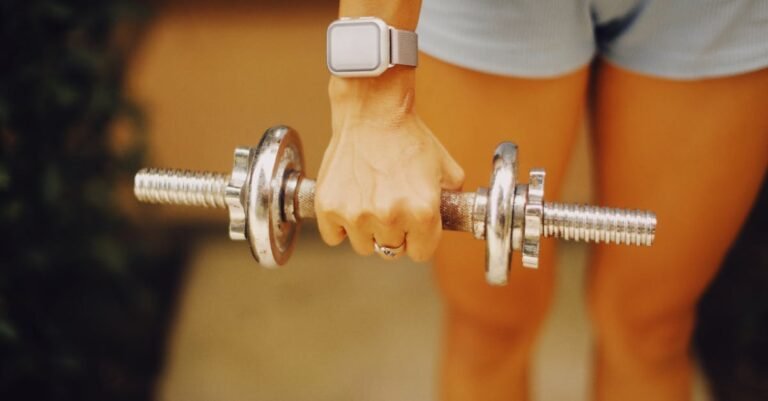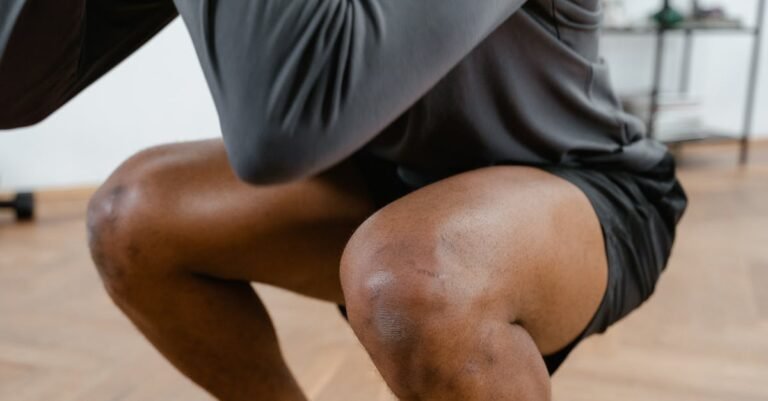Table of Contents
- Bodyweight Exercises For Full Body Fitness: Your Ultimate Guide
- Why Choose Bodyweight Exercises? The Unbeatable Benefits
- Getting Started: Setting Yourself Up for Success
- The Best Bodyweight Exercises for a Full Body Blast
- Structuring Your Bodyweight Workout Routine
- Beyond the Basics: Advanced Bodyweight Techniques
- Nutrition and Recovery: Fueling Your Progress
- Conclusion: Embrace Your Bodyweight Power
- Frequently Asked Questions (FAQs)
Bodyweight Exercises For Full Body Fitness: Your Ultimate Guide
Ever feel like getting fit requires a fancy gym membership, expensive equipment, or hours carved out of your already packed schedule? Think again! What if I told you the most powerful fitness tool you possess is… well, you? Your own body is an incredible machine capable of building strength, endurance, and flexibility, all without needing a single dumbbell or treadmill. Welcome to the world of bodyweight exercises, your ticket to achieving full body fitness anytime, anywhere.
Forget the intimidating clanging of weights and the crowded gym floors. Bodyweight training strips fitness back to its core, focusing on fundamental movement patterns that translate directly into real world strength and capability. It’s accessible, adaptable, and incredibly effective. Ready to unlock your body’s potential? Let’s dive in!
Why Choose Bodyweight Exercises? The Unbeatable Benefits
So, why ditch the weights (or at least supplement them) for exercises using just your body? The reasons are compelling and go far beyond just saving a few bucks. Bodyweight training offers a unique blend of advantages that make it a fantastic choice for beginners and seasoned athletes alike.
Convenience and Accessibility: Workout Anywhere, Anytime
This is arguably the biggest draw. Your gym is always open! Whether you’re in your living room, a hotel room, a park, or even waiting for a meeting to start (okay, maybe just a few squats then!), you can squeeze in a workout. There are no opening hours, no travel time, and no excuses related to location. All you need is a little bit of space and your own motivation. Think about it: no more packing a gym bag, fighting traffic, or waiting for equipment. Fitness becomes seamlessly integrated into your life, not another chore to schedule.
Cost Effective Fitness: No Gym Membership Needed
Let’s talk finances. Gym memberships, personal trainers, and home equipment can add up quickly, creating a barrier for many people wanting to get fit. Bodyweight training eliminates this cost entirely. It’s free. You don’t need fancy leggings or the latest tech gadgets. Your investment is purely in time and effort, making fitness truly accessible regardless of your budget. This democratization of fitness is powerful – it means everyone has the opportunity to improve their health and strength.
Building Functional Strength for Everyday Life
What’s “functional strength”? It’s the strength you use in your daily activities – lifting groceries, climbing stairs, playing with your kids, carrying luggage, getting up off the floor. Bodyweight exercises often mimic these natural movements. Squats strengthen the muscles you use to sit and stand. Lunges improve your balance and leg strength for walking and climbing. Push ups build the upper body power needed for pushing doors or lifting objects. By training these fundamental patterns, you’re not just getting stronger in the abstract; you’re becoming more capable and resilient in your everyday life, reducing the risk of injury and making daily tasks feel easier.
Getting Started: Setting Yourself Up for Success
Jumping into bodyweight training is easy, but a little preparation goes a long way in ensuring you get the most out of your workouts safely and effectively. Think of it like laying a solid foundation before building a house.
Warm Up Essentials: Preparing Your Body
Would you start a car engine on a freezing morning and immediately redline it? Probably not. Your body needs a similar gentle start. A good warm up increases blood flow to your muscles, raises your core body temperature, and improves joint mobility, preparing your body for the demands of the workout and significantly reducing injury risk. Aim for 5 to 10 minutes of light cardio (like jogging in place, jumping jacks) followed by dynamic stretches. Dynamic stretches involve moving parts of your body through their full range of motion, like arm circles, leg swings, torso twists, and walking lunges. Save static stretching (holding a stretch) for after your workout.
Proper Form Over Quantity: The Golden Rule
This cannot be stressed enough. Performing 10 perfect push ups is infinitely better than struggling through 20 sloppy ones. Poor form not only reduces the effectiveness of the exercise (meaning you’re not working the intended muscles properly) but also dramatically increases your risk of strains, sprains, and other injuries. Focus on controlled movements. If you’re unsure about your form, watch videos from reputable sources, use a mirror, or even record yourself. Start slowly, master the basic movement, and only then think about increasing speed or repetitions. Quality always trumps quantity in bodyweight training.
Listening to Your Body: Avoiding Injury
Your body is constantly sending you signals. It’s crucial to learn how to interpret them. There’s a difference between the muscle burn of a good workout and sharp, shooting, or persistent pain. Pushing through fatigue is one thing; pushing through pain is asking for trouble. If something feels wrong, stop. Don’t be afraid to modify exercises or take extra rest days when needed. Rest is when your muscles repair and grow stronger. Ignoring pain or skipping rest can lead to overuse injuries and setbacks. Be patient with yourself and respect your body’s limits, especially when you’re just starting.
The Best Bodyweight Exercises for a Full Body Blast
Okay, let’s get to the good stuff! The beauty of bodyweight training lies in its versatility. Countless exercises target every muscle group. Here are some fundamental, high impact moves that form the bedrock of a great full body routine.
Upper Body Powerhouses
Building upper body strength doesn’t require a bench press. Your own weight provides plenty of resistance.
Push Ups: Variations for All Levels
The classic push up is a phenomenal exercise for your chest, shoulders, and triceps, while also engaging your core. But don’t worry if a standard push up feels too challenging right now! Start with incline push ups (hands on a wall, table, or sturdy chair) or knee push ups. As you get stronger, progress to standard push ups, and then challenge yourself further with decline push ups (feet elevated), diamond push ups (hands close together to target triceps), or even plyometric push ups (explosively pushing off the ground). The variations are endless, ensuring continuous progress.
Dips (Using a Chair or Bench)
Dips are fantastic for hitting your triceps and chest. Find a sturdy chair, bench, or step. Sit on the edge, place your hands on the edge beside your hips, fingers pointing forward. Extend your legs out in front (straight legs are harder, bent knees are easier). Scoot your hips off the edge, supporting your weight with your arms. Lower your body by bending your elbows until they reach about a 90 degree angle, keeping your back close to the chair. Push back up powerfully. Focus on using your triceps to lift, not your legs.
Lower Body Burners
Your legs are your body’s powerhouse. Training them with bodyweight exercises builds strength, stability, and calorie burning potential.
Squats: The King of Leg Exercises
If you could only do one leg exercise, the squat might be it. It works your quads, hamstrings, glutes, and even your core. Stand with your feet shoulder width apart, chest up, core engaged. Initiate the movement by pushing your hips back as if sitting in a chair. Lower down until your thighs are at least parallel to the floor, keeping your back straight and knees tracking over your toes (not caving inward). Drive through your heels to return to the starting position. Variations include prisoner squats (hands behind head), sumo squats (wider stance), jump squats (adding an explosive jump), and pistol squats (single leg squats, very advanced!).
Lunges: Targeting Balance and Strength
Lunges are excellent for targeting each leg individually, improving balance, and working the glutes, quads, and hamstrings. Step forward with one leg, lowering your hips until both knees are bent at approximately 90 degree angles. Ensure your front knee stays behind your toes and your back knee hovers just above the ground. Push off your front foot to return to the start. Alternate legs. You can do forward lunges, reverse lunges (stepping backward, often easier on the knees), walking lunges, or lateral lunges (stepping sideways).
Core Crushers
A strong core is essential for stability, power transfer, and injury prevention. It’s much more than just visible abs!
Planks: Building Stability
The plank is an isometric exercise, meaning you hold a position rather than moving through reps. It’s incredibly effective for building deep core strength and stability. Start in a push up position, then lower onto your forearms, keeping your elbows directly under your shoulders. Your body should form a straight line from head to heels. Engage your core, glutes, and quads. Don’t let your hips sag or rise too high. Hold for time. Variations include side planks (supporting yourself on one forearm) and plank jacks (jumping feet in and out while holding plank).
Crunches and Leg Raises: Classic Abs
While planks build stability, crunches and leg raises target the rectus abdominis (the “six pack” muscles). For crunches, lie on your back, knees bent, feet flat. Place hands lightly behind your head or across your chest. Lift your shoulders off the floor, contracting your abs. For leg raises, lie flat, legs straight. Keeping your lower back pressed into the floor, slowly raise your legs towards the ceiling, then lower them back down without letting them touch the floor. Remember to focus on controlled movements and abdominal contraction, not using momentum.
Full Body Compound Movements
These exercises recruit multiple muscle groups simultaneously, making them incredibly efficient for a full body workout and boosting your heart rate.
Burpees: The Ultimate Challenge?
Ah, the burpee. Loved and loathed in equal measure, it’s undeniably effective. A standard burpee involves dropping into a squat, placing hands on the floor, kicking feet back into a plank, doing a push up (optional), jumping feet back towards hands, and explosively jumping up. It hits your chest, arms, core, legs, and provides a serious cardiovascular challenge. Start slowly and modify as needed (e.g., step back instead of jumping, skip the push up).
Mountain Climbers: Cardio and Core Combined
Start in a plank position. Bring one knee towards your chest, then quickly switch legs, as if running in place horizontally. Keep your core tight and hips stable (avoid bouncing). Mountain climbers work your core, shoulders, and legs while significantly elevating your heart rate, making them a great cardio and strength combo.
Structuring Your Bodyweight Workout Routine
Okay, you know the moves. Now, how do you put them together into an effective routine? Structure is key to consistency and progress.
Frequency: How Often Should You Train?
For full body bodyweight workouts, aiming for 2 to 4 sessions per week is a good starting point. This allows your muscles adequate time to recover and rebuild between sessions. Listen to your body – if you’re feeling particularly sore or fatigued, take an extra rest day. Consistency over time is more important than pushing yourself too hard too soon. Beginners might start with 2 days a week and gradually increase as they get fitter.
Sets, Reps, and Rest: Finding Your Sweet Spot
This depends on your goals.
- For strength: Aim for lower reps (e.g., 5-8) per set, using more challenging exercise variations. Take longer rest periods (e.g., 90 seconds to 2 minutes) between sets.
- For muscle growth (hypertrophy): Aim for moderate reps (e.g., 8-15) per set. Rest periods can be shorter (e.g., 60-90 seconds).
- For endurance: Aim for higher reps (e.g., 15+) per set, or perform exercises for time (e.g., 30-60 seconds). Keep rest periods short (e.g., 30-60 seconds).
A common approach is to perform 3-4 sets of each exercise. You can structure workouts as circuits (performing one set of each exercise before repeating) or traditional sets (completing all sets of one exercise before moving to the next).
Progression: How to Keep Challenging Yourself
Your body adapts quickly. To keep seeing results, you need to continually challenge it. This is the principle of progressive overload. With bodyweight exercises, you can progress in several ways:
- Increase reps/duration: Do more repetitions or hold planks longer.
- Increase sets: Add another round to your circuit or an extra set to each exercise.
- Decrease rest time: Shorten the breaks between sets or exercises.
- Increase difficulty: Move to a harder variation of the exercise (e.g., standard push ups instead of knee push ups, jump squats instead of regular squats).
- Improve technique/range of motion: Focus on deeper squats, more controlled movements, or a fuller range of motion.
Constantly strive to make your workouts slightly harder than the last time.
Beyond the Basics: Advanced Bodyweight Techniques
Once you’ve mastered the fundamentals, you can incorporate more advanced techniques to spice up your routine and push your limits further.
Plyometrics: Adding Explosive Power
Plyometrics, or jump training, involves exercises where muscles exert maximum force in short intervals, aiming to increase power (speed strength). Think jump squats, plyo push ups, bounding lunges, or box jumps (using a sturdy platform). These exercises are fantastic for improving athletic performance and boosting calorie burn, but they are high impact. Ensure you have a solid strength foundation and master proper landing mechanics before incorporating intense plyometrics to avoid injury.
Isometric Holds: Building Strength Through Stillness
We touched on this with planks. Isometrics involve contracting muscles without changing their length. Think wall sits (holding a squat position against a wall), static lunge holds, or holding the bottom position of a push up or squat. These holds build muscular endurance and strength at specific joint angles, improve stability, and can be surprisingly challenging. They are great finishers or can be incorporated within your sets.
Nutrition and Recovery: Fueling Your Progress
Exercise is only one part of the fitness equation. You can’t out train a poor diet, and neglecting recovery will hinder your progress. Focus on whole, unprocessed foods – lean proteins (for muscle repair), complex carbohydrates (for energy), and healthy fats (for hormone function and overall health). Stay well hydrated by drinking plenty of water throughout the day. Equally important is sleep. Aim for 7-9 hours of quality sleep per night, as this is when most muscle repair and growth hormone release occurs. Active recovery like light walking or stretching on rest days can also aid circulation and reduce soreness.
Conclusion: Embrace Your Bodyweight Power
There you have it – a deep dive into the empowering world of bodyweight fitness. It’s clear that you don’t need a gym or fancy gear to build a strong, capable, and fit body. By mastering fundamental movements, focusing on proper form, consistently challenging yourself, and supporting your training with good nutrition and rest, you can achieve incredible results using the most accessible tool you own: your own body. So, find some space, start moving, and discover the amazing potential that lies within you. Your fitness journey starts now, powered by you!
Frequently Asked Questions (FAQs)
Can I build muscle with only bodyweight exercises?
Absolutely! While lifting heavy weights is often associated with muscle building, bodyweight exercises can definitely stimulate muscle growth (hypertrophy). The key is progressive overload. By increasing reps, sets, difficulty (using harder variations like pistol squats or decline push ups), and decreasing rest times, you continually challenge your muscles, forcing them to adapt and grow stronger and larger. Consistency and proper nutrition are crucial partners in this process.
How long should a bodyweight workout session be?
The ideal duration depends on your fitness level, goals, and intensity. A focused, high intensity bodyweight session could be effective in just 20-30 minutes. A more moderate intensity workout might last 45-60 minutes. Beginners might start with shorter sessions and gradually increase duration or intensity. Listen to your body and prioritize quality of movement over just logging minutes.
Are bodyweight exercises good for weight loss?
Yes, bodyweight exercises can be very effective for weight loss. They burn calories during the workout, especially compound movements like burpees, squats, and lunges which engage large muscle groups. Furthermore, building muscle through bodyweight training increases your resting metabolic rate, meaning you burn more calories even when you’re not exercising. Combining regular bodyweight workouts with a healthy, calorie controlled diet is a great strategy for sustainable weight loss.
Do I need any equipment at all for bodyweight training?
Strictly speaking, no. The beauty of bodyweight training is that your body provides the resistance. However, a few inexpensive items can add variety and challenge. A pull up bar allows for powerful back and bicep exercises. A sturdy chair or bench is useful for dips and incline/decline movements. A yoga mat can add comfort for floor exercises. But these are optional enhancements, not necessities.
How do I stay motivated with bodyweight workouts at home?
Motivation can be tricky when you’re your own trainer! Try these tips:
- Set clear goals: Know what you want to achieve (e.g., do 10 full push ups, hold a plank for 2 minutes).
- Schedule your workouts: Treat them like important appointments.
- Vary your routine: Try new exercises or workout structures (circuits, HIIT) to keep things interesting.
- Track your progress: Seeing improvements (more reps, harder variations) is incredibly motivating.
- Find a workout buddy: Even virtually, accountability helps.
- Focus on how you feel: Notice increased energy, strength, and confidence.
- Make it fun: Put on your favorite music!










